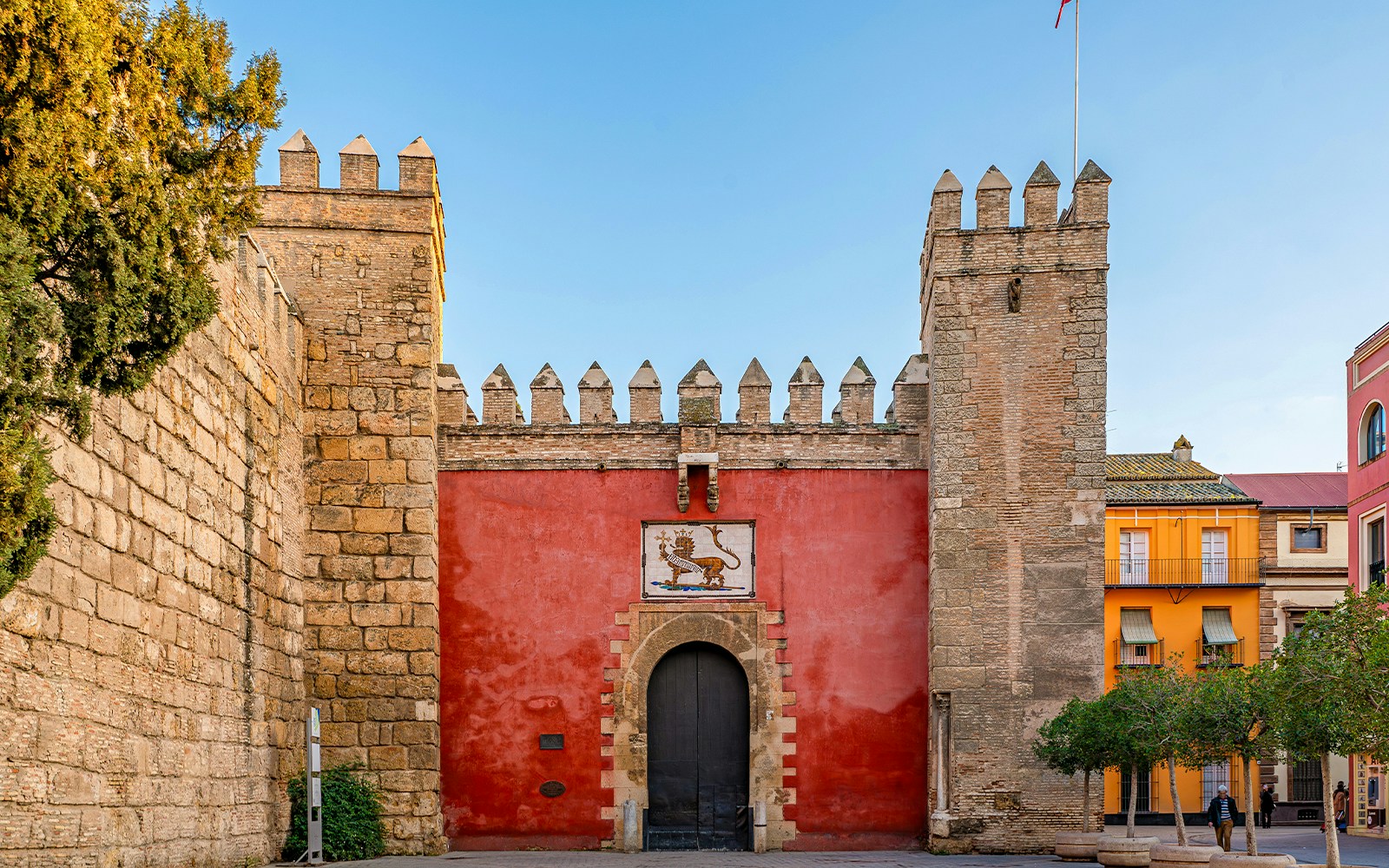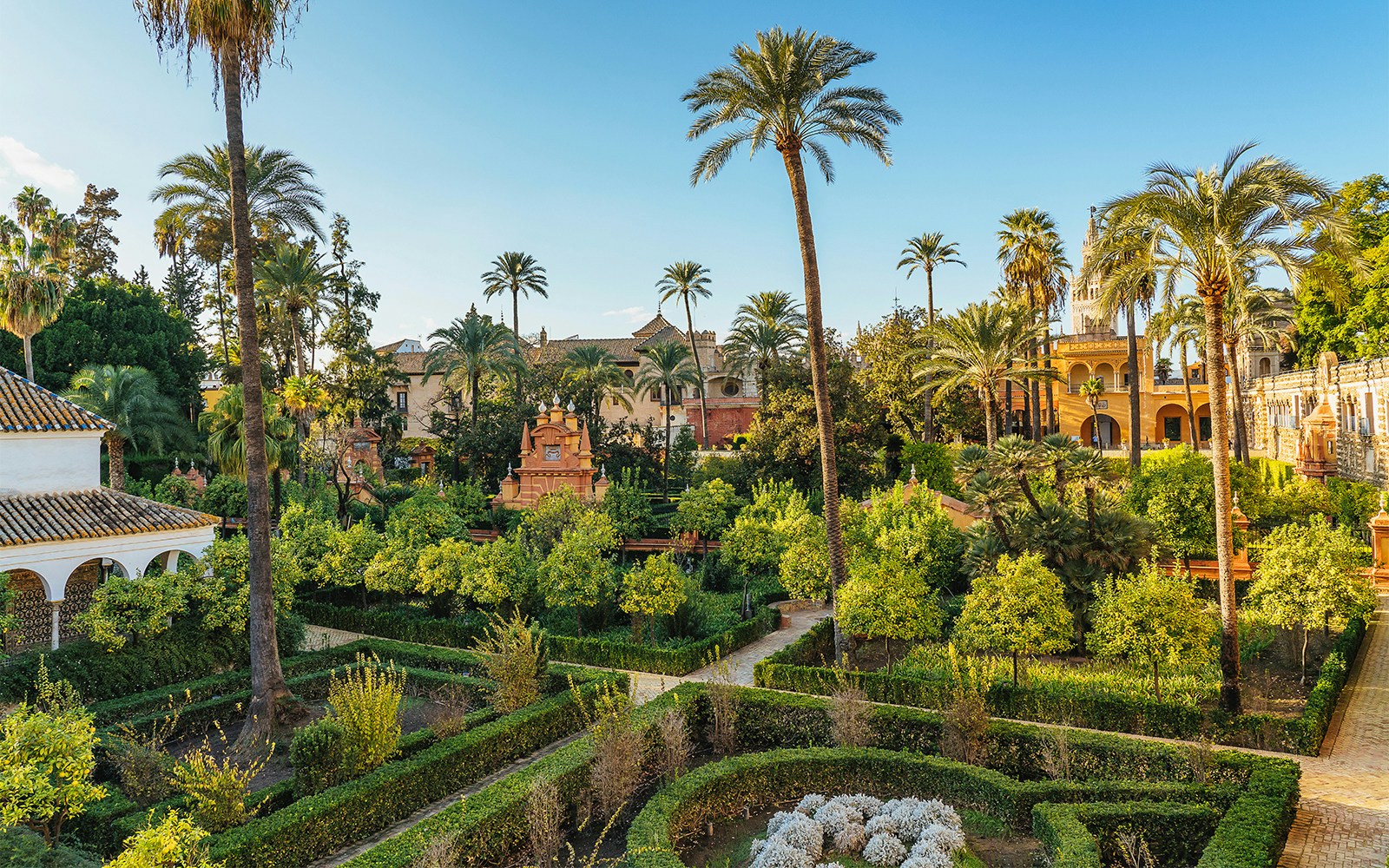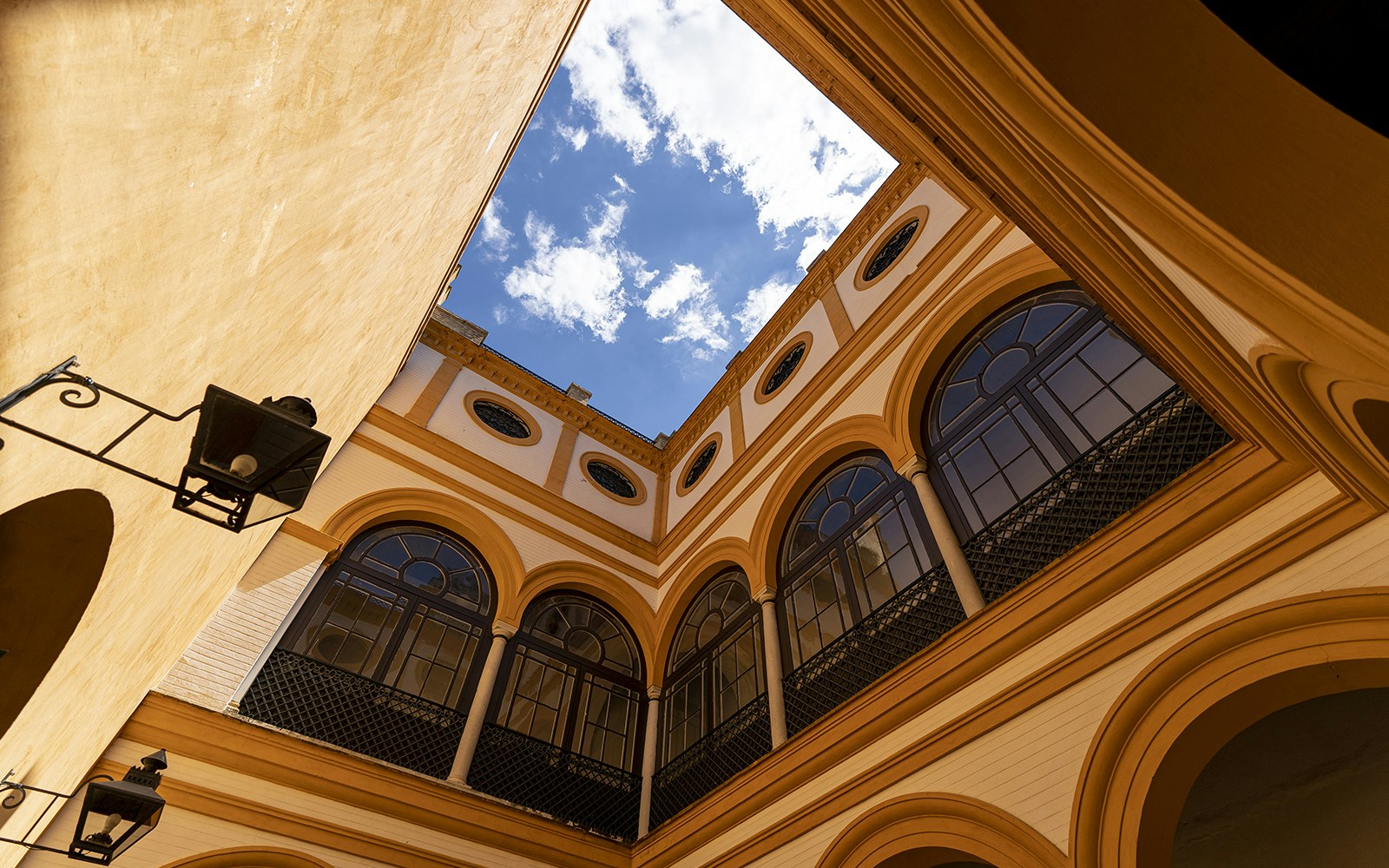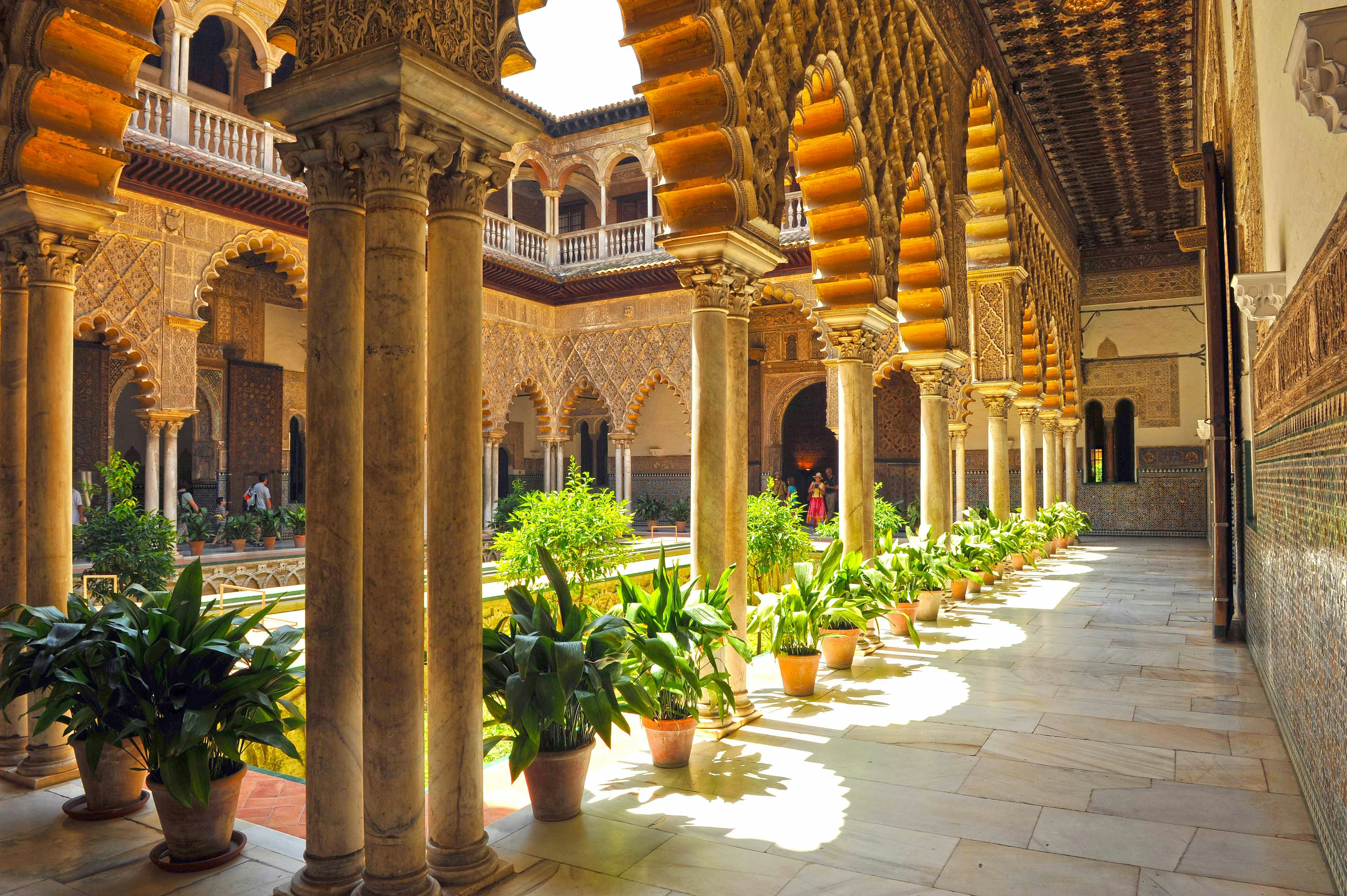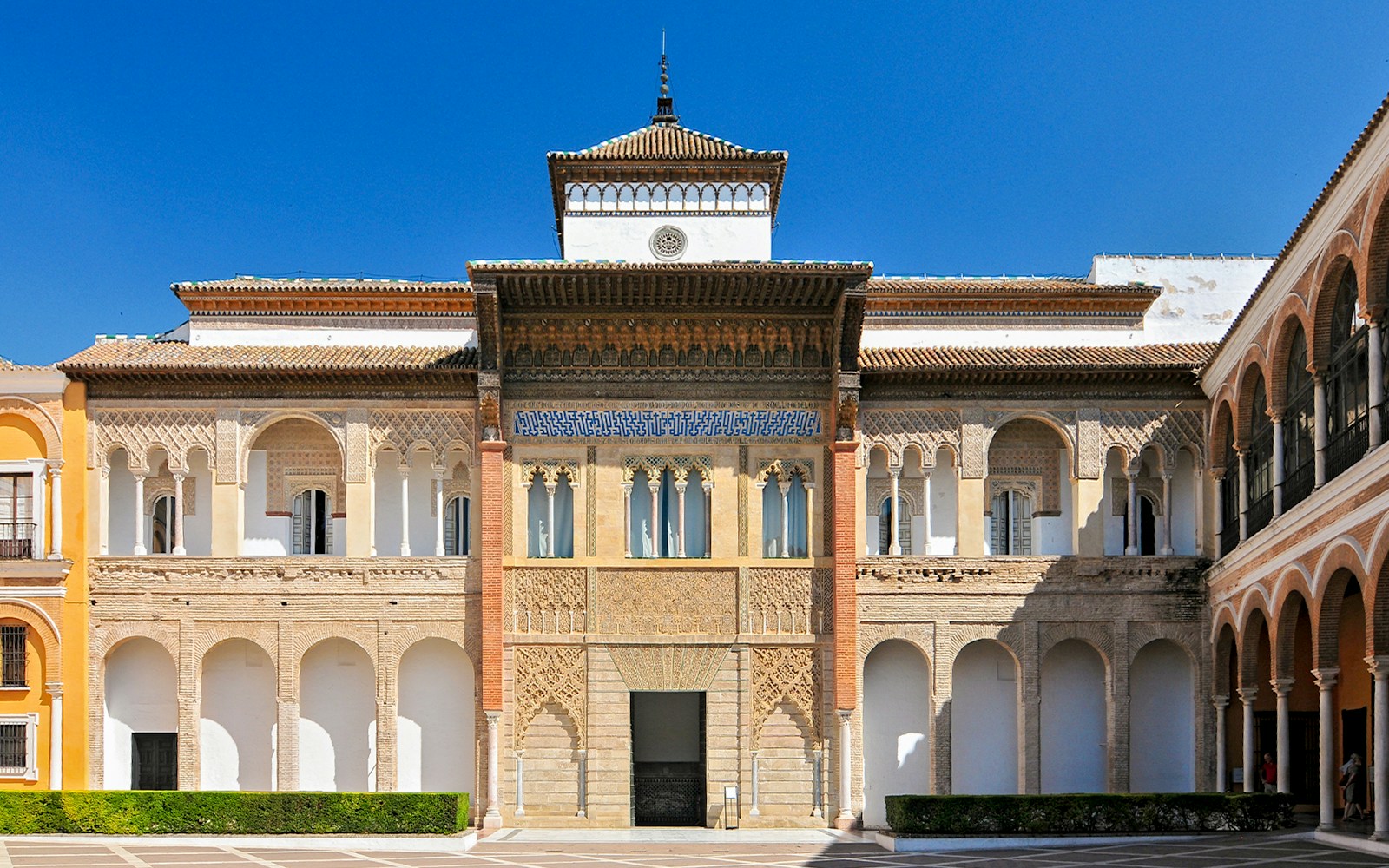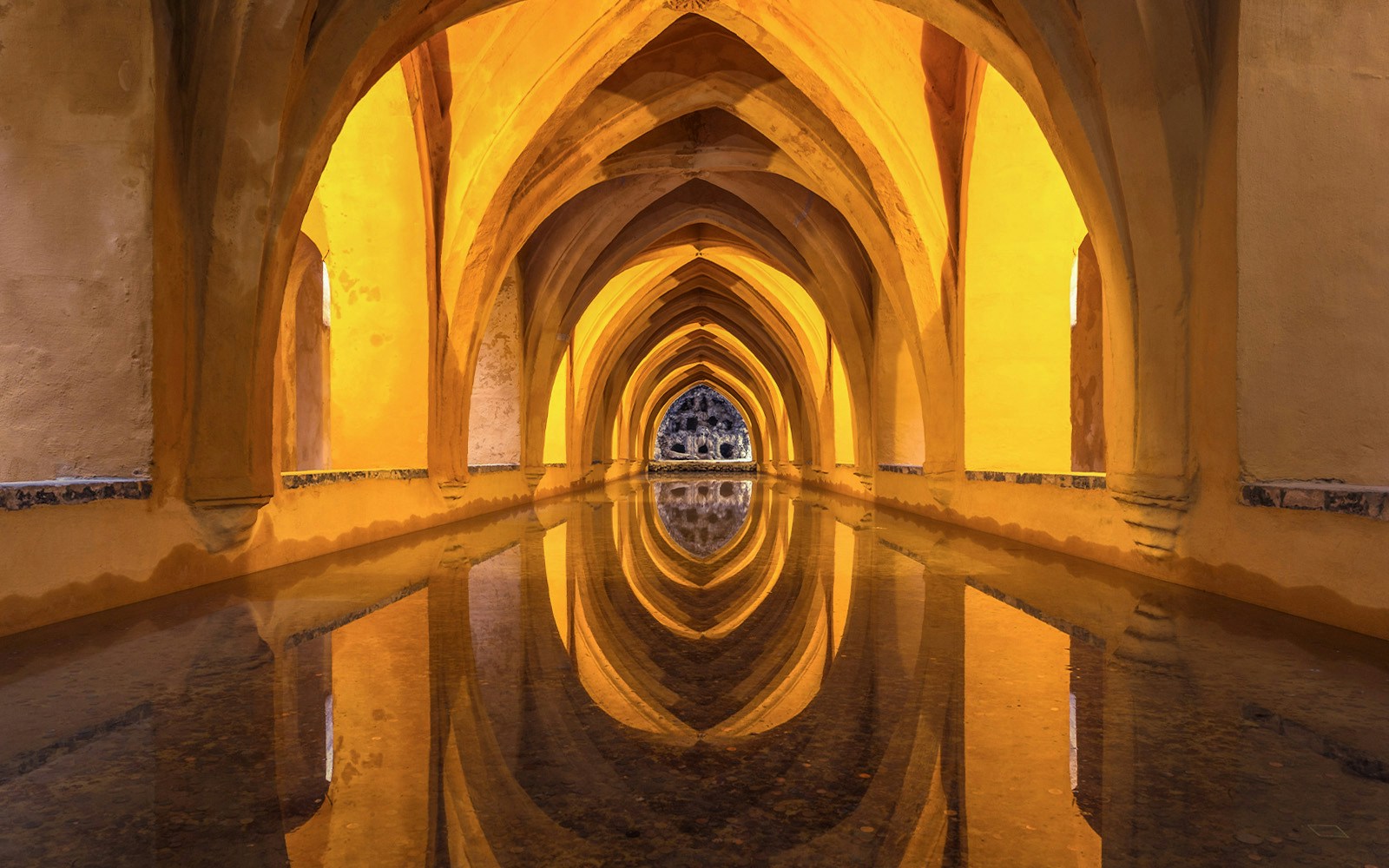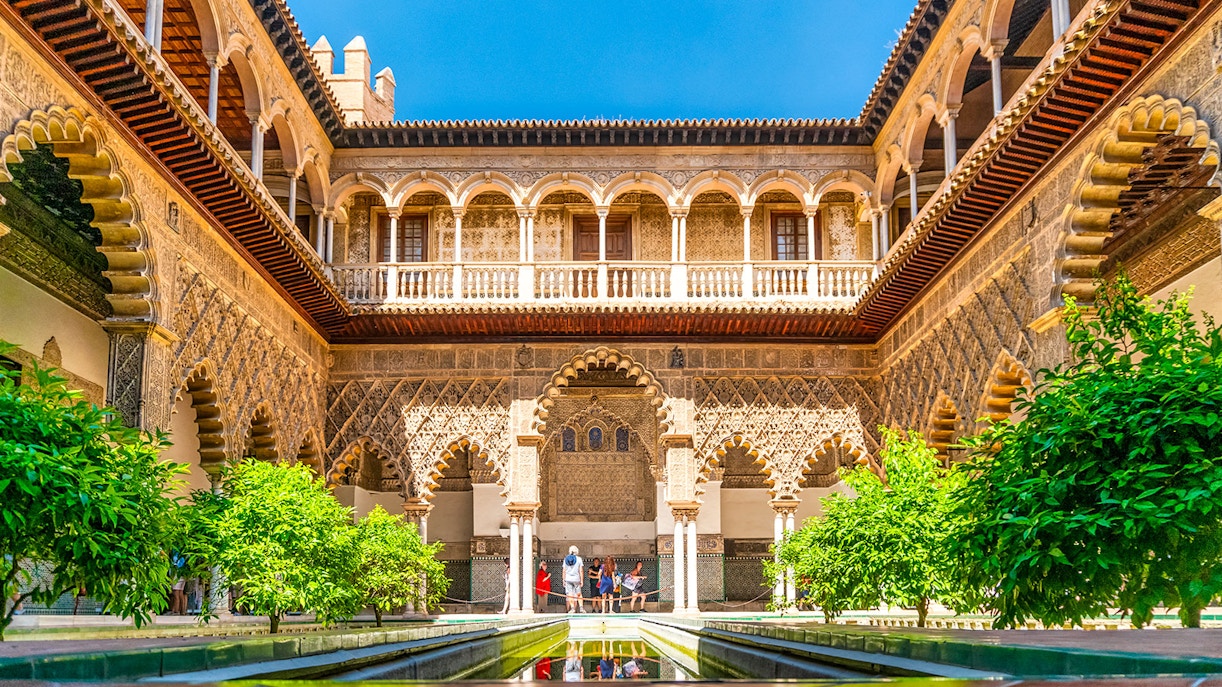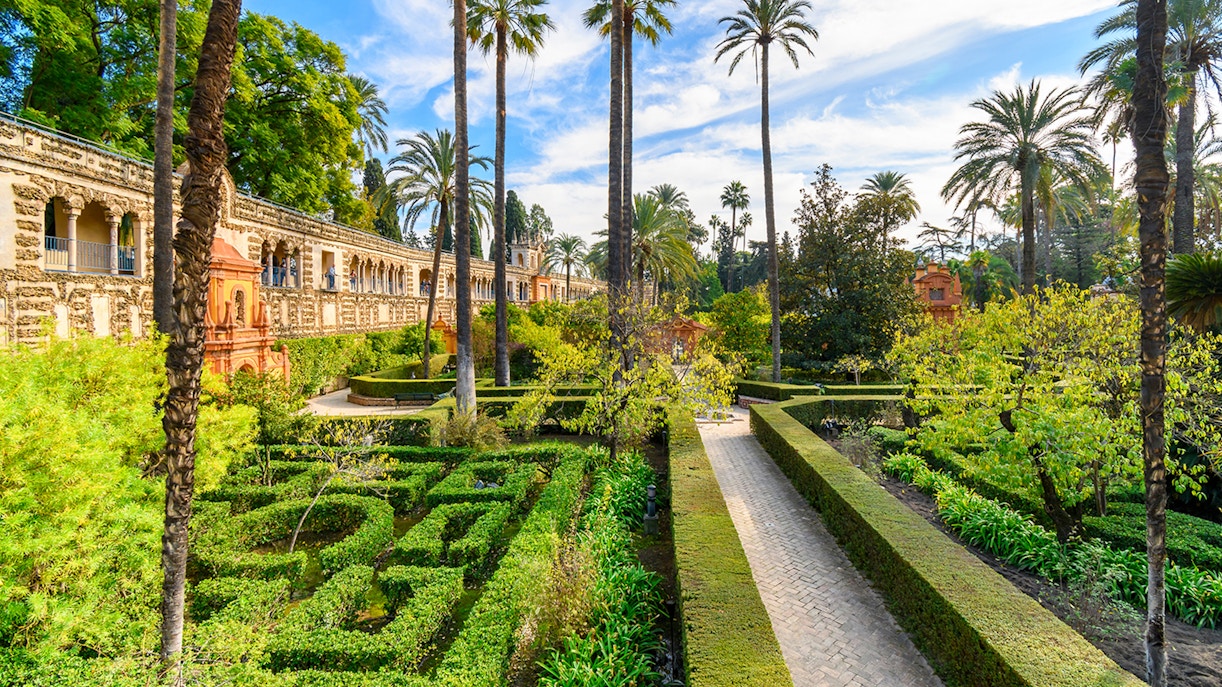- An active royal residence: Unlike many European palaces, the Alcázar isn’t just a monument—it's still officially used by the Spanish royal family during visits to Seville. This makes it the oldest royal palace in Europe still in use today. After all, very few palaces can claim to host royalty one week and tourists the next!
- A stunning blend of architectural styles: The royal palace features a complex yet jaw-dropping blend of architectural styles. From Moorish gardens to Renaissance modifications and Mudéjar tilework, the palace is a visual marvel.
- The lush gardens: The gardens at the Alcázar of Seville offer a lush and peaceful escape from the bustling city outside the palace walls. Spanning a whopping 7 hectares, they’re home to countless orange trees, fountains, hidden patios, and peacocks.
- A UNESCO World Heritage Site: The Alcázar of Seville was designated a UNESCO World Heritage Site in 1987, alongside the Seville Cathedral and the Archive of the Indies.
- A Game of Thrones set: Remember the city of Dorne from the iconic show Game of Thrones? Well, the stunning gardens and intricately designed halls you saw in the city were all set in this very palace!



